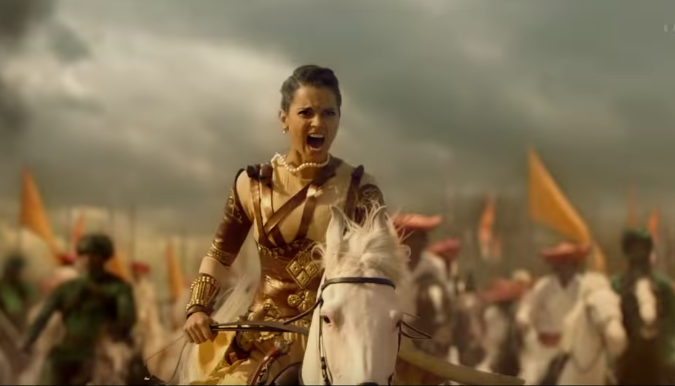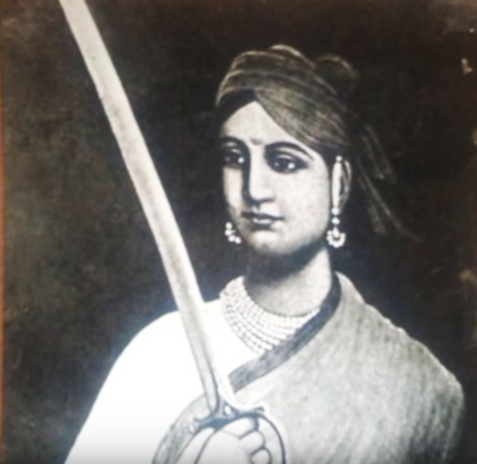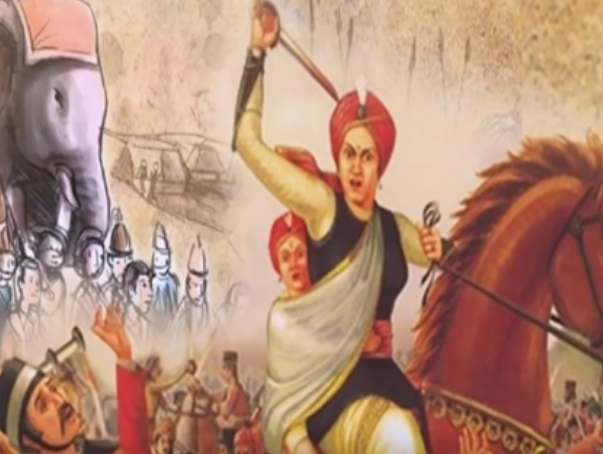Rani Laxmibai/Rani Lakshmibai was the queen of the British province of Jhansi in the mid 1800s. She is regarded as one of the most important and popular figures to have lead the Indian rebellion of 1857 against the ‘British East India Company’ rulers of the country.
The upcoming Kangana Ranaut starring Bollywood flick ‘Manikarnika: The Queen of Jhansi’ is a biopic of the life of Rani Laxmibai. It is directed by Krish and Ranaut plays the role of the Queen of Jhansi. The movie was supposed to release in mid 2018, but got delayed as some portions needed reshoot. Since Krish had already become busy with other projects, Ranaut became the director and started the reshoot in August 2018. The movie is slated to release on 26th January 2019.
Early Life, Education, and Marriage
The Queen of Jhansi, Manikarnika, was born in Varanasi on 19th Nov 1828 to Moropant Tambe and Bhagirathi Bai. Her mother died when she was very young. Her father worked in the court of the Peshwa of Bithoor district who considered Manikarnika to be just like her daughter and raised her like one. The Rani is the cousin of Nana Sahib.
Manikarnika got her education at home in the company of Nana Sahib and her childhood pal Tatya Tope. She learnt fencing, shooting, horsemanship, and mallakhamba. Manu was her nickname.
She was wed to the Maharaja of Jhansi, Raja Gangadhar Rao Newalkar, in May 1842. She gave birth to Damodar Rao, but he died when only four months old. Subsequently, the Raja adopted the son of his cousin and renamed him Damodar Rao. He appointed him as the heir to the throne before his death in 1853 and also asked the British imperialists to allow her widow to be the Queen of Jhansi till Damodar Rao came of age to sit on the throne.
The British rulers used the Doctrine of Lapse and denied the claim to throne of the adopted son. They offered a pension of 60,000 Indian rupees to the Rani, annexed the province as one of their territories, and asked her to leave the Jhansi Fort and the palace.
Queen of Jhansi – Real Pictures (Paintings)
The mutiny of 1857 against the British imperialists
Rani Laxmibai asked the permission of the British rulers to raise a small army for her protection after she heard about the mutiny by the sepoys (soldiers) in Meerut. Nonetheless, the rebels attacked Jhansi, raided the treasures and the ammunition. They left Jhansi after the Rani paid them a ransom. The Rani was then asked by the British to take care of the province on behalf of the British, till new British troops arrived there. During this period, the advisors of the Queen began to feel that they should be free of the British rule.
The British forces arrived in Jhansi in March 1858. The fort was well guarded by the Rani and all its defenses were in top shape. The British asked the Rani to surrender, but she made a proclamation of independence against the imperialist rulers. Subsequently, the British army laid siege to the fort. They started bombarding the fort and also simultaneously fought the army men led by Tatya Tope who had come to assist the Rani defend the fort. The British army defeated Tatya and captured the fort. The Rani and others escaped from Jhansi and set up a camp in the town of Kalpi. They then captured the town and prepared to defend it against the British.
The British attacked Kalpi and defeated Rani Laxmibai and her supporters. She then fled to Gwalior and captured the city and the Gwalior fort. Nana Sahib was then declared as the Peshwa of a new Maratha dominion in Gwalior. Later, the British forces attacked Gwalior and captured the Gwalior fort. Rani Laxmibai had to wade through the battlefield in trying to escape from the city. She was mortally wounded and died on 17 June 1858.
The tomb of Rani Laxmibai is located in the Phool Bagh region of Gwalior, Madhya Pradesh India.




